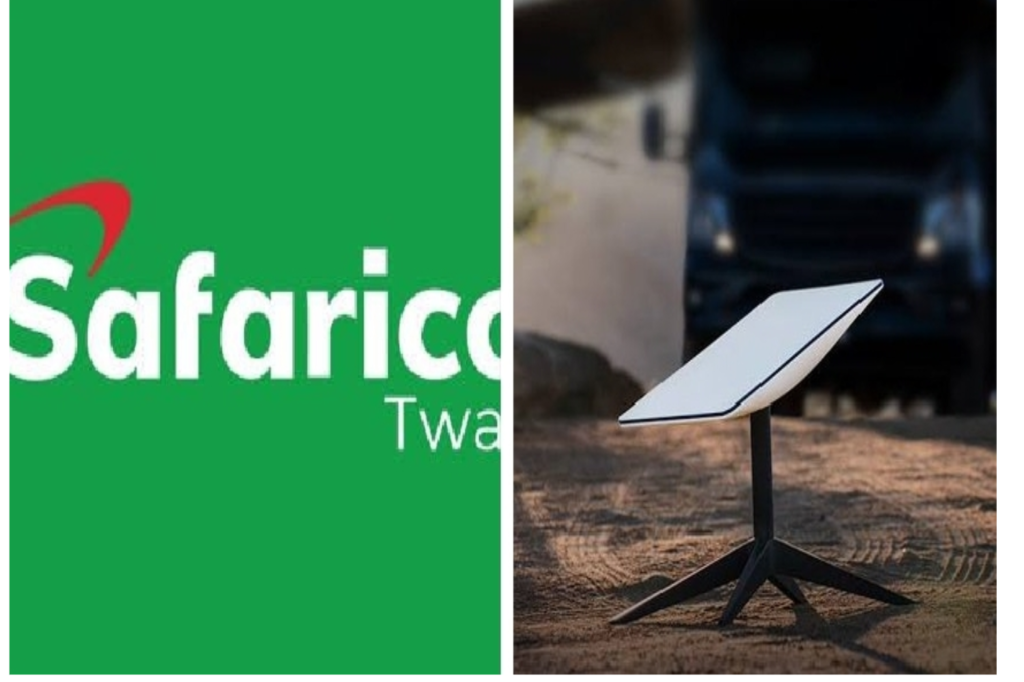
Introduction
Starlink, the satellite internet service provider founded by SpaceX, has recently made headlines for its entry into the Kenyan internet market. Promising high-speed internet access through its innovative satellite technology, Starlink aims to bridge the digital divide in a country where internet access has historically been limited, particularly in rural areas. The promise of reliable and fast internet services has piqued the interest of many individuals and businesses alike, as Kenya continues to advance its digital economy.
However, this expansion has not been without controversy. Major local telecommunications companies, Jamii Telecommunications and Safaricom, have levied serious accusations against Starlink, branding their pricing strategies as predatory. These established players argue that Starlink’s aggressive pricing undermines their market stability and threatens their ability to operate sustainably. This conflict draws attention to the competitive dynamics within the Kenyan telecommunications landscape, where pricing strategies and service delivery are frequently at the center of debate.
The allegations from Jamii and Safaricom raise important questions about the implications of Starlink’s pricing on both consumers and competition within the industry. Many consumers eagerly await the potential benefits of improved internet access, but the larger picture reveals a complex interplay of market forces. The concerns of local telcos highlight how Starlink’s entry could disrupt existing frameworks, potentially affecting everything from pricing strategies to network investments in the telecom sector.
This development signals a critical juncture for Kenyan consumers, who may stand to benefit from increased competition and enhanced service options. As we further explore the ramifications of these tensions in the Kenyan internet market, it becomes clear that the narrative surrounding Starlink is not solely about innovation but also involves significant considerations regarding fair competition and consumer protection.
What is Starlink and How Does it Work?
Starlink is a satellite internet constellation project developed by SpaceX, which aims to provide high-speed internet access globally through a network of low Earth orbit (LEO) satellites. Launched to address the gaps in internet accessibility, especially in rural and underserved areas, Starlink utilizes a large number of satellites to create a mesh network that can deliver internet services to users equipped with a specially designed satellite dish.
The technology behind Starlink allows users to connect to the internet via a phased array antenna, enabling users to maintain a reliable connection regardless of their geographic location. One of the significant advantages of Starlink is its ability to provide high-speed connectivity, with reports of download speeds ranging from 50 Mbps to 150 Mbps in many areas. Notably, the service exhibits low latency compared to traditional satellite internet, making activities such as video conferencing and online gaming more feasible.
Moreover, Starlink stands out for its resilience in remote regions where conventional internet infrastructure is either lacking or economically unfeasible for deployment. This means that individuals and businesses in isolated communities in Kenya, for example, can access the same level of connectivity as their urban counterparts, bridging the digital divide. The entry of Starlink into the Kenyan market has prompted existing telecommunication companies to reevaluate their service offerings and pricing structures, as the presence of such a disruptive technology threatens their traditional business models.
By providing an alternative to traditional internet providers, Starlink not only enhances connectivity for users who have long been underserved but also promotes increased competition within the market. This shift could ultimately lead to better pricing and service options for consumers, changing the dynamics of internet access in Kenya and beyond.
The Accusations: Predatory Pricing
The launch of Starlink in Kenya has sparked significant controversy, particularly among local telecommunications giants Jamii and Safaricom. These companies have leveled serious accusations against Starlink, claiming that the satellite internet provider is engaging in predatory pricing tactics to undermine local competition. According to Jamii and Safaricom, Starlink’s pricing is not only substantially lower than existing market rates but also strategically unsustainable.
For instance, Starlink has reported a monthly subscription fee that is considerably less than what local providers charge for comparable internet services. Safaricom, a leading player in the Kenyan telecommunication sector, argues that this approach erects barriers to entry for local firms and jeopardizes the long-term viability of the market. In a country where affordability and access to quality internet services are critical, the introduction of artificially low prices poses a challenge for existing providers to maintain their customer base without eroding their financial health.
The accusations of predatory pricing highlight a broader concern about the implications for competition within the Kenyan market. Local companies fear that if Starlink continues to leverage its financial strength by offering lower prices, it may drive some players out, consequently diminishing the choices available to consumers. Moreover, this could lead to a market structure where few providers dominate, stifling innovation and preventing the growth of a diverse telecom ecosystem.
Jamii and Safaricom have called for regulatory oversight to address these pricing strategies, emphasizing the need to ensure fair competition in order to safeguard the livelihoods of local businesses. They argue that a market dominated by one entity, especially one with access to significant funding and global reach like Starlink, could ultimately harm consumers in the long run by limiting their options. The unfolding situation in Kenya raises critical questions about the balance between innovation and fair market practices in a rapidly evolving digital landscape.
The Case for Starlink
Starlink, the satellite internet constellation being constructed by SpaceX, presents a transformative opportunity for internet access, particularly in underserved regions of Kenya. By offering high-speed internet connectivity via satellite technology, Starlink addresses the significant challenge of accessibility that has long plagued rural areas. These regions often lack the necessary infrastructure for traditional broadband services, leaving residents with limited or no internet access. With Starlink, Kenyans can potentially benefit from affordable internet at speeds on par with urban telecommunications offerings, fundamentally altering the digital landscape.
The ability of Starlink to reach remote and rural locations means it could play a pivotal role in bridging Kenya’s digital divide. Many Kenyans in these areas have historically faced barriers to information access, education, and economic opportunities due to inadequate internet coverage. With Starlink’s deployment, these challenges could be minimized, empowering individuals not only to access online education and resources but also to participate in the growing digital economy. In this way, Starlink could serve as an essential tool for enhancing digital literacy and economic development across the country.
Moreover, the entry of Starlink into the market may stimulate technological innovation among local service providers. With increased competition for internet users, existing telecom companies may be prompted to enhance their services and reduce pricing models to retain customers. This wave of innovation can lead to the introduction of new technologies and platforms that cater to the evolving demands of consumers, further enhancing Kenya’s burgeoning tech ecosystem.
In light of these potential benefits, it becomes increasingly essential to consider how satellite internet solutions like Starlink can contribute positively. Through improved internet access, the possibilities for growth in entrepreneurship, education, and communication are vast, offering a promising outlook for the socioeconomic landscape in Kenya.
The Local Telcos’ Perspective
Local telecommunications companies in Kenya, notably Jamii and Safaricom, have found themselves grappling with a myriad of challenges, particularly as new entrants like Starlink disrupt the market landscape. One major issue they face is the substantial infrastructure costs associated with providing reliable telecommunication services. These expenses include investments in network equipment, fiber optics, and maintenance operations, which are necessary to ensure that they meet regulatory standards and customer expectations. Unlike established players, Starlink’s reliance on satellite technology potentially allows it to reach consumers without incurring the significant infrastructure costs that terrestrial networks must bear.
Regulatory compliance is another critical concern for local telcos. Companies like Jamii and Safaricom must navigate a complex framework of regulations imposed by the Communication Authority of Kenya (CAK). These regulations cover various aspects such as data privacy, user safety, and service quality. Compliance with these legal requirements often demands ongoing investment and resource allocation, placing local telcos at a disadvantage when compared to a disruptor like Starlink, which may not be subject to the same level of regulatory scrutiny in the same way.
Concerns regarding unfair competition have also emerged, as local telcos fear that Starlink’s pricing strategies may undermine their sustainability. The ability of Starlink to potentially offer lower or more flexible pricing, based on its unique operational model, raises alarms among local providers. Consequently, both Jamii and Safaricom have begun advocating for regulatory intervention, emphasizing the need for fair pricing mechanisms that would level the playing field. They argue that without such measures, the competition could distort market dynamics, threatening not only their businesses but also the broader telecommunications sector in Kenya.
The Role of Kenya’s Communications Authority
The regulatory framework for internet service providers in Kenya is predominantly overseen by the Communications Authority of Kenya (CA). Established under the Kenya Information and Communications Act, the CA is entrusted with the responsibility of ensuring fair competition within the telecommunications sector. This involves setting policies and regulations that govern the conduct of both local and international service providers, including issues related to pricing, service quality, and market competition.
The CA operates within a dual mandate: to protect consumer interests while simultaneously fostering a conducive environment for local businesses. As concerns arise over Starlink’s pricing model—which some Kenyan telecommunications companies perceive as predatory—the CA plays a crucial role in evaluating these claims. The authority must determine whether Starlink’s pricing undermines the competitive landscape or if it offers beneficial options for consumers in a country where internet connectivity is still developing.
In addressing these concerns, the CA might explore various regulatory measures, which could include market investigations to assess the impact of Starlink’s operations on existing local ISPs. They could examine whether the pricing strategies used by Starlink comply with the legal standards of fair competition and if such strategies deter new entrants into the market. Further, the CA can advocate for consumer protection policies that ensure subscribers are not adversely affected by either exploitative pricing or inferior service provision.
Ultimately, the regulatory response will require a delicate balance. Ensuring that consumers have access to affordable and high-quality internet services is paramount. Still, it is equally important to safeguard the viability of local telecommunications businesses. The actions taken by the CA in relation to Starlink will likely set a significant precedent for how multinational internet providers operate within Kenya’s evolving digital marketplace.
Global Context: Starlink vs. Local Providers
The emergence of Starlink, a satellite internet constellation established by SpaceX, has been met with a mix of excitement and concern as it expands its services across the globe. In various markets, Starlink’s entry has sparked tensions with local telecommunications providers. Similar to the situation unfolding in Kenya, countries such as India and Canada have experienced disputes related to pricing strategies and competition. In India, for instance, the introduction of Starlink created apprehension among local ISPs who feared that the competitive pricing model would undermine their operations and affect the overall market dynamics.
Regulatory bodies in India proposed that Starlink comply with local licensing regulations and provide clarity on its pricing strategy. Following extensive discussions, a framework was established, allowing Starlink to operate while ensuring that local providers were not sidelined. This provided an opportunity for collaboration rather than conflict, demonstrating a pathway that Kenya might consider for reconciling Starlink’s ambitions with the existing telecommunications landscape.
Similarly, in Canada, the Canadian Radio-television and Telecommunications Commission (CRTC) intervened in a dispute between Starlink and local broadband providers. The CRTC emphasized the need for fair competition and consumer protection, ultimately leading to a negotiated agreement that facilitated Starlink’s entry while maintaining a stable environment for local players. The balance sought by the Canadian government reflects a broader recognition of the necessity to protect small-scale providers from being outpriced while allowing innovative services to flourish.
The experiences of these countries highlight critical lessons for Kenya. By adopting a regulatory approach that fosters healthy competition, the country can ensure that both Starlink and local ISPs remain viable. Additionally, initiating dialogues between service providers might pave the way for collaborative solutions that prioritize consumer needs. Ultimately, understanding these global contexts may lead to more strategic discussions in Kenya regarding the interplay between international services like Starlink and the established telecommunications landscape.
The Future of Kenya’s Internet Market
The ongoing dispute between Starlink and local telecommunications giants in Kenya highlights significant possibilities for the future of the country’s internet market. As the globe increasingly shifts towards digital connectivity, the stakes in this conflict are notably high for both service providers and consumers alike. Starlink, with its ambitious vision of global internet coverage through satellite technology, presents unique opportunities to transform Kenya’s internet accessibility. However, its entry also poses challenges to established local players, who fear decreased market share and profitability.
One potential outcome of this competition could be increased collaboration between Starlink and existing telco companies. This partnership may arise as local firms seek to leverage Starlink’s technological advancements to enhance their services. Such an alliance could foster innovation, potentially leading to improved internet speeds and widespread access, particularly in underserved rural areas. Furthermore, regulatory bodies may see an incentive to facilitate this collaboration, recognizing that a combined effort may serve the broader public interest.
Conversely, if local telcos continue to view Starlink’s pricing strategy as predatory, regulatory actions may emerge to level the playing field. This scenario might include implementing price controls or imposing restrictions on service providers to ensure fair competition. Ultimately, a regulatory response could encourage better practices, fostering a consumer-friendly environment that could accelerate the evolution of Kenya’s digital economy.
The introduction of Starlink in this landscape also opens the door for heightened competition, which could lead to improved service offerings and reduced prices for consumers. As companies strive to capture market share, consumers may benefit from a wider array of choices and the potential for higher-quality services. As this dynamic unfolds, it will be crucial to monitor how these shifts impact not only the players within the market but also the end-users who rely on reliable internet connectivity for education, business, and everyday communication.
Conclusion
In recent discussions, the emergence of Starlink as a new player in the Kenyan telecommunications market has sparked considerable debate among local telco giants. Central to this debate are accusations of predatory pricing directed towards Starlink, raising concerns about fair competition and market stability. Throughout this blog post, we have explored the disruptive potential of Starlink’s satellite internet service and its implications for existing providers and customers alike. The entry of Starlink represents a significant shift in how connectivity is delivered in Kenya.
The concerns raised by local telcos highlight a broader issue in the telecommunications industry: the balance between innovation and fair market practices. Starlink’s pricing strategy, which may be perceived as aggressive, aims to bring high-speed internet to underserved regions. However, it raises eyebrows regarding long-term sustainability in pricing and service delivery. The strategy adopted by Starlink plays a crucial role in determining whether it will coexist with established providers or reshape the entire market landscape in Kenya.
As stakeholders monitor developments, it becomes increasingly important to promote an environment of fair competition that supports healthy market dynamics. The outcome of this situation will not only affect the involved parties but also shape the future of connectivity in Kenya, influencing consumer choices and technological advancements. Properly addressing these concerns surrounding pricing and competition will be essential in ensuring that all players, including newcomers like Starlink and established operators, can thrive while serving the Kenyan population’s needs for reliable, affordable internet access.
Ultimately, the responsiveness of regulators, the actions of local telcos, and the strategies employed by Starlink will collectively determine how this narrative unfolds, underscoring the importance of equitable practices in fostering a thriving telecommunications ecosystem in Kenya.
Call to Action
As the discussion surrounding Starlink’s recent entry into the Kenyan market intensifies, we invite our readers to share their insights and experiences regarding internet service providers in Kenya. Your opinions are crucial in grasping the broader implications of this shift in the telecommunications landscape. Have you utilized services from established local providers, or have you experienced Starlink’s offerings? How do you perceive the competition between these entities? We believe that these reflections can foster a productive dialogue about the future of internet services in Kenya.
Moreover, it is essential to consider whether Starlink’s disruptive pricing strategies will benefit consumers in the long run or create challenges for local providers. This could set a precedent that either encourages innovation or cultivates an environment of predatory pricing. How do you see the current dynamic playing out? Are you optimistic about the potential improvements in service quality and accessibility, or are you concerned about the implications for the existing market players? Your feedback will not only enrich this conversation but can also inform other consumers who may be grappling with similar questions.
We encourage you to stay engaged with this topic as the regulatory landscape evolves. Following updates on how government bodies respond to the market’s changing dynamics will provide insights into the potential benefits and pitfalls of increased competition. Understanding these developments is crucial in navigating the future of internet access in Kenya. Join the conversation today by sharing your thoughts and insights, as your voice matters in shaping the narrative around Starlink and local telecommunications. Together, we can explore the real implications of these changes for consumers and the market as a whole.





